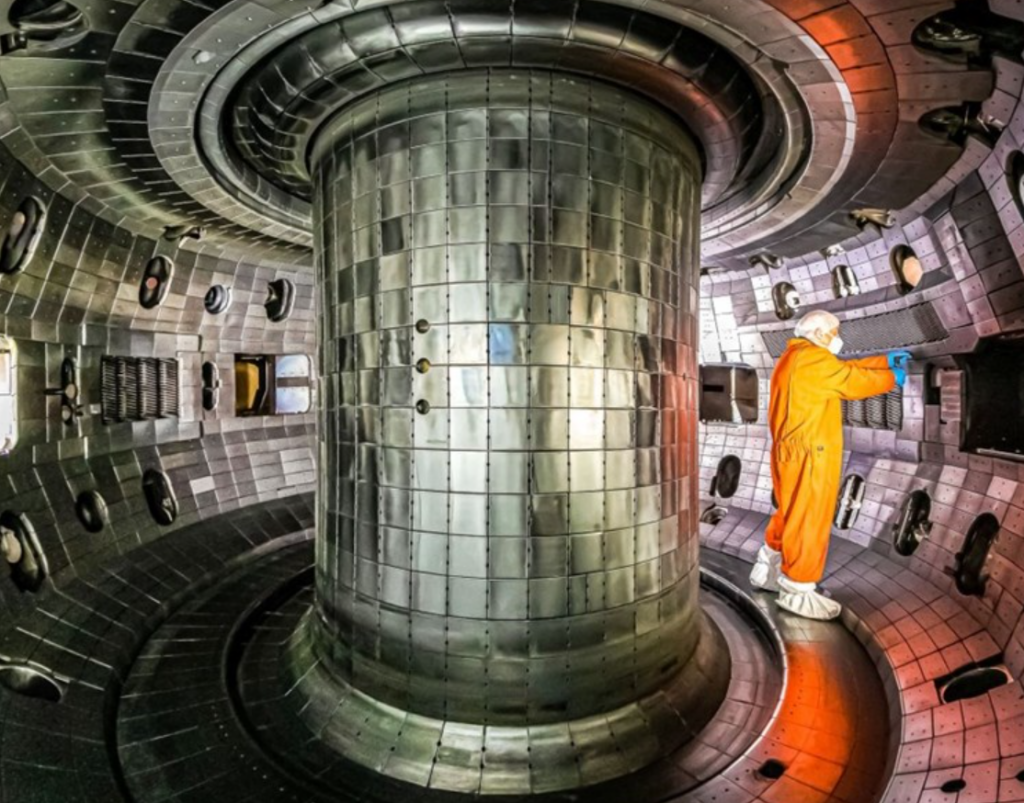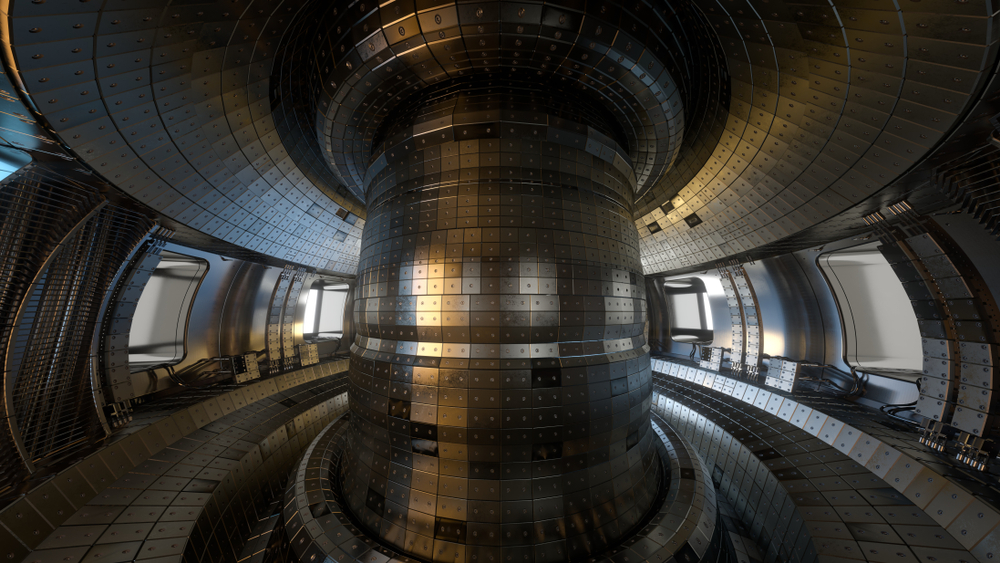At Princeton University’s Andlinger Center, a cross-disciplinary team of engineers, physicists, and data scientists, collaborating with the Princeton Plasma Physics Laboratory (PPPL), have used AI to address plasma instabilities in nuclear fusion.
Fusion energy, which mirrors the process of powering the Sun, uses immense pressure and heat to fuse atoms, releasing vast quantities of energy.
Replicating this on Earth involves confining ultra-hot plasma with powerful magnetic fields within tokamak reactors – complex devices often dubbed ‘stars in jars.’ However, in the confines of a fusion reactor, plasma is notoriously volatile, potentially destabilizing and breaching the magnetic barriers designed to contain it.
In experiments conducted at the DIII-D National Fusion Facility in San Diego, a team of researchers showcased an AI model that, relying solely on historical experimental data, could predict the onset of ‘tearing mode instabilities’ – a particular type of plasma disruption – up to 300 milliseconds in advance.
The researchers employed a deep neural network trained on past DIII-D tokamak data to predict future instabilities based on real-time plasma characteristics.
This model then informed a reinforcement learning (RL) algorithm, which iteratively refined its control strategies through simulated experiments, learning to maintain high power levels while avoiding instabilities.
The team’s findings were published in a study in Nature.
Azarakhsh Jalalvand, a co-author, likened the process to flight training, where a pilot learns in a simulator before taking control of an actual aircraft.
“You wouldn’t teach someone by handing them a set of keys and telling them to try their best,” Jalalvand remarked, stressing the importance of a gradual, informed learning process for the AI.
Upon validating the AI controller’s simulation performance, the team proceeded to real-world tests at the DIII-D tokamak, where they observed the AI successfully manipulating reactor parameters to reduce instabilities.

The AI controller’s brief yet critical predictive powers enable the system to adjust operational parameters in real-time, preventing the instabilities and maintaining the plasma’s equilibrium within the reactor’s magnetic field.
Professor Egemen Kolemen, who spearheaded the research, explained the team’s approach, stating, “By learning from past experiments, rather than incorporating information from physics-based models, the AI could develop a final control policy that supported a stable, high-powered plasma regime in real time, at a real reactor.”
Jaemin Seo, from the Department of Mechanical and Aerospace Engineering, discussed how accurate and fast prediction is the linchpin of this study, noting, “Previous studies have generally focused on either suppressing or mitigating the effects of these tearing instabilities after they occur in the plasma. But our approach allows us to predict and avoid those instabilities before they ever appear.”
“Tearing mode instabilities are one of the major causes of plasma disruption, and they will become even more prominent as we try to run fusion reactions at the high powers required to produce enough energy,” Seo explained.
Looking ahead, the researchers plan to gather more evidence of the AI controller’s performance and extend its capabilities to other tokamaks and plasma instabilities.
“We have strong evidence that the controller works quite well at DIII-D, but we need more data to show that it can work in a number of different situations,” Seo remarked, outlining the path forward.
Bridging AI’s energy divide with nuclear fusion
The Princeton study demonstrates how AI can support fusion, but fusion could also support AI.
In many ways, AI has a symbiotic yet fragile relationship with energy. Evidence strongly suggests that generative AI’s exponential growth is leading to staggering energy consumption that already rivals the consumption of small nations.
The essence of the dilemma lies in AI’s foundational infrastructure – data centers. These vast digital installations are notorious for their colossal energy and water demands.
The International Energy Agency (IEA) recently highlighted the growing footprint of data centers, which already consume more than 1.3% of the world’s electricity.
Projections by the Boston Consulting Group and the European Union paint a grim picture, with data center energy demands potentially doubling or even tripling in the coming years, exacerbating energy challenges.
In response, Big Tech is strengthening its energy infrastructure by the day while considering nuclear energy, including fusion.
Microsoft recently opened a job posting for a “Principal Program Manager Nuclear Technology” and aims to develop a global strategy centered around Small Modular Reactors (SMRs) and micro-reactors, demonstrating cognizance of the looming energy issues confronting AI.
Recently, Helion Energy, supported by Sam Altman of OpenAI, announced its intention to launch the world’s first fusion power plant within five years.
If Helion works, it not only is a potential way out of the climate crisis but a path towards a much higher quality of life.
Have loved being involved for the last 7 years and excited to be investing more. David and Chris are amazing.
— Sam Altman (@sama) November 5, 2021
As the Princeton study explains, fusion reactions are immensely complex to contain and unpredictable.
However, another central challenge is achieving a “net energy gain,” meaning the fusion process produces more energy than it consumes.
Helion faces considerable technical challenges. Jessica Lovering from the Good Energy Collective highlights two major hurdles: “producing more energy than the process uses – and converting that energy into a consistent, affordable form of electricity that could flow onto the grid.”
To date, only Lawrence Livermore’s National Ignition Facility has achieved “scientific net energy gain” with fusion, but not “engineering gain,” which considers the total energy input for the process.
In other words, securing net energy gains from the whole fusion process, including engineering efforts, is critical to making fusion a viable energy technology rather than an expensive experiment.
where @Helion_Energy will soon start to install polaris: pic.twitter.com/Tk7znzvOPg
— Sam Altman (@sama) February 2, 2024
Helion is forging ahead, developing its seventh prototype, Polaris, which is expected to demonstrate electricity production from fusion reactions in 2024.
Based in Everett, Washington, Helion has already secured Microsoft as its first customer through a power purchase agreement. They’re aiming for their first plan to produce at least 50 megawatts (mW) capacity.
microsoft becomes helion’s first customer, in the first commercial deal for fusion power:https://t.co/q9mOeWdR0s
— Sam Altman (@sama) May 10, 2023
This is minuscule in terms of raw capacity, with the average wind turbine producing around 3mW – so it’d be equivalent to a small wind farm. However, once operational, Helion will create clean energy like other forms of renewable energy. It’s safer than fission plants and will eventually become cheaper to produce en-masse.
As the digital and physical realms become intertwined, the energy demands of AI and cloud computing will continue to escalate.
Pursuing nuclear fusion offers a glimpse into a future where clean, abundant energy could power inexorable AI development.
And seeing that Microsoft, Altman, and other tech firms are already lining themselves up as investors and buyers, it will definitely be tech companies that get their hands on fusion power first.


